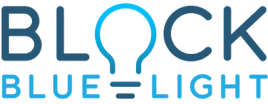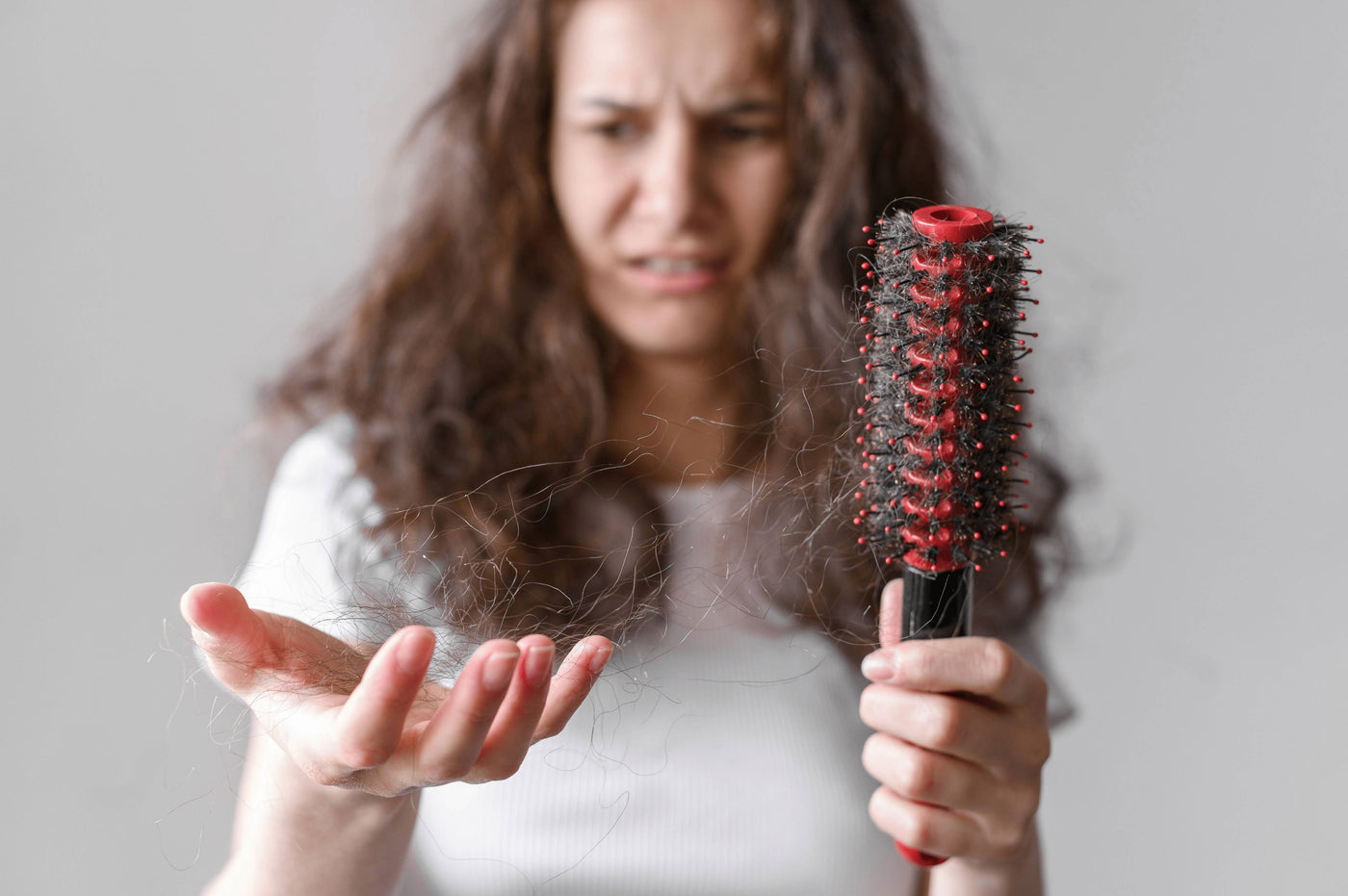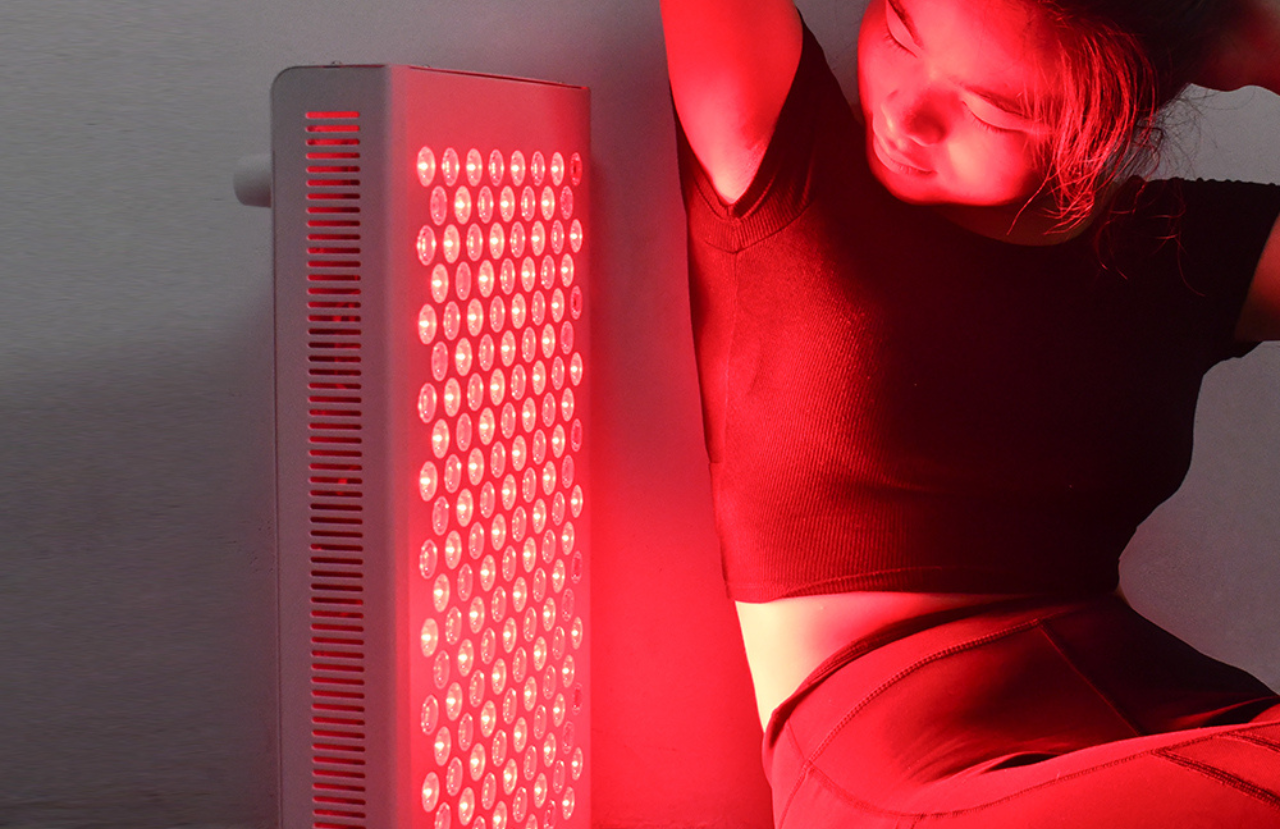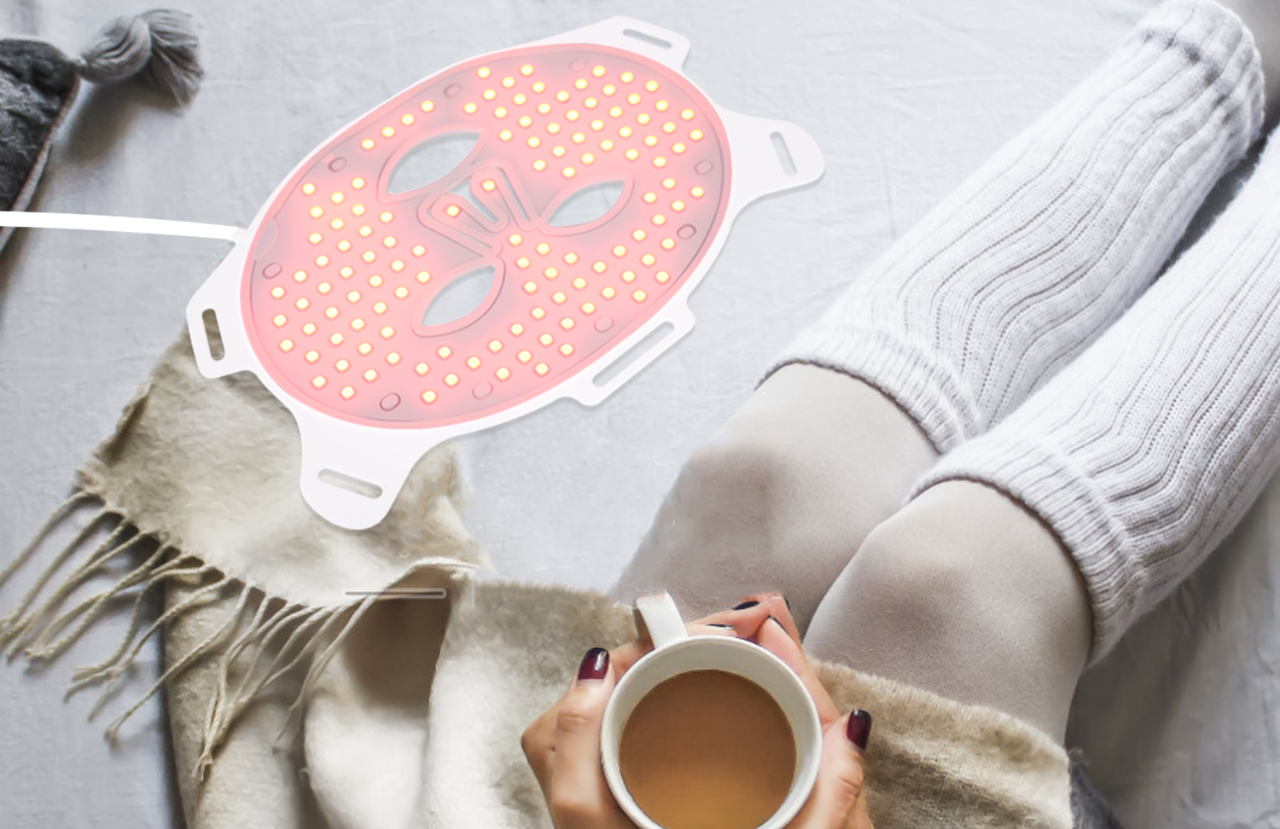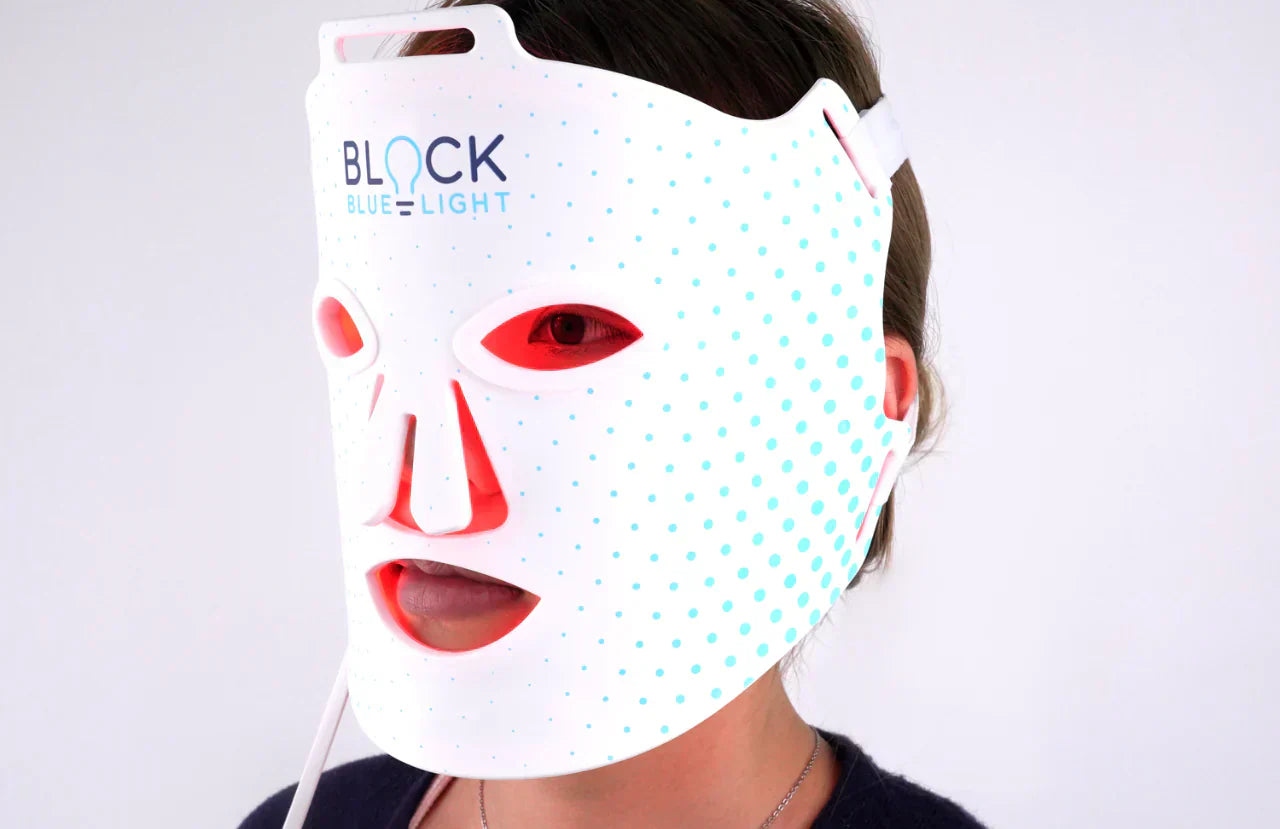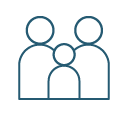Jump To Section:
- What Is Red Light Therapy For Hair Loss?
- How Does Red Light Therapy Work For Hair Loss?
- Does Red Light Therapy For Hair Loss Work?
- How To Do Red Light Therapy For Hair Loss At Home
- Best Red Light Therapy Device For Hair Loss At Home
Hair loss can be frustrating, but a promising solution is gaining popularity: red light therapy (RLT). This non-invasive treatment uses specific wavelengths of light to stimulate hair growth. One of its benefits is that you don’t need to visit a clinic for this treatment -you can do red light therapy for hair loss at home. Let’s break down what RLT is, how red light therapy works, and why it might be the right choice for you.
What Is Red Light Therapy For Hair Loss?
Red light therapy, also known as PBM (photobiomodulation) therapy, is a noninvasive skin treatment that uses red light wavelengths to penetrate the skin and prompt cellular activity. Originally developed by scientists in the 1990s for wound healing and skin regeneration, doctors now use it for various purposes, such as reducing skin lines and acne, promoting faster healing after injuries, reducing inflammation, and stimulating hair growth.
Despite the purpose of red light therapy, the underlying principle is the same. Red light therapy stimulates mitochondria in the cells to produce more energy, which allows the cells to regenerate, grow, and heal faster.

How Does Red Light Therapy Work For Hair Loss?
Hair follicles are tiny cavities in the skin from which hair grows. They comprise cells and proteins that nourish and support the hair shaft. Hair follicles can become dormant or shrink due to genetics, age, hormonal changes, or environmental stressors. Red light therapy delivers light to the cells in these follicles, boosting energy production and promoting hair growth.
Here’s a step-by-step explanation of how it works:
- Step 1: When the red light therapy device is applied over the scalp, it penetrates deep into the skin.
- Step 2: The wavelengths of red light stimulate the mitochondria to produce more adenosine triphosphate (ATP), cells' energy currency.
- Step 3: Increased ATPs help cells better function and repair themselves, leading to healthier and more active hair follicles.
- Step 4: Dormant follicles may enter the hair cycle's anagen phase (the active growth phase).
Does Red Light Therapy For Hair Loss Work?

Whether red light therapy will effectively mitigate your hair loss, will depend on the underlying reason for your hair loss.
To understand how RLT works for hair loss, it's essential to grasp the hair growth cycle, which comprises three main phases:
- Anagen (growth phase)
- Catagen (transitional phase)
- Telogen (resting phase)
- Exogen (shedding phase)
Hair loss occurs when hair follicles prematurely enter the telogen phase or when the anagen phase is shortened. This can lead to thinning hair and baldness over time.
While there’s still debate over how red light therapy helps with hair loss, the consensus is that it stimulates the follicles during the anagen phase, by increasing cell proliferation, and blood circulation. It prolongs the anagen phase and helps dormant follicles re-enter the growth cycle.
Hair loss can occur due to many reasons. The most common types of hair loss are:
- Androgenetic Alopecia (male and female pattern baldness)
- Alopecia Areata (Autoimmune-Related Hair Loss)
- Telogen Effluvium (Stress-Related Hair Loss)
- Traction Alopecia (Hair Loss Due to Tension)
- Anagen Effluvium (Hair Loss Due to Chemicals)
- Cicatricial Alopecia (Scarring Alopecia)
- Trichotillomania (Hair-Pulling Disorder)
Research has shown that RLT is particularly effective for androgenetic alopecia (male and female pattern baldness), the most common type of hair loss. It can also benefit those with telogen effluvium. Research also shows that patients with alopecia areata, an autoimmune condition causing patchy hair loss, report positive results with RLT. However, RLT may not be effective for scarring alopecia, where follicles are permanently damaged, or for hair loss due to chemotherapy, which requires addressing the underlying medical condition.
The Research On Red Light Therapy For Hair Loss
Research shows red light therapy to be an effective, non-invasive treatment for hair loss.
A 2018 study published in Lasers in Surgery and Medicine supported using red light therapy for hair growth, particularly in individuals with androgenetic alopecia. The study highlighted that RLT treatments led to a notable increase in hair count and diameter.
A 2017 study published in Dermatologic Surgery, showed that red light therapy effectively improved hair regrowth and density by stimulating follicular activity and prolonging the anagen phase of the hair growth cycle. The findings suggested that RLT can be a beneficial adjunct to conventional treatments for hair loss.
A 2016 study published in Lasers in Surgery and Medicine indicated that red light therapy enhances microcirculation in the scalp, leading to improved nutrient delivery to hair follicles. This mechanism supports hair growth and overall scalp health.
Despite its benefits, red light therapy has limitations. Results can vary widely among individuals, requiring consistent use over several months to see noticeable improvements.
Consult your healthcare professional if you experience rapid or extreme hair loss, to rule out underlying health issues first. Red light therapy for female/male hair loss at home is the most effective when combined with other treatments, such as minoxidil, finasteride, or hair supplements. These enhance results and provide a comprehensive approach to hair restoration.
How To Do Red Light Therapy For Hair Loss At Home
Doing red light therapy sessions for hair loss at home is pretty straightforward. BlockBlue Light’s red light therapy devices are safe and easy to use. Here’s an overview:
- Choose the right device for your needs (follow our buying guide below)
- Ensure your scalp is completely dry
- Position the device 6-12 inches away from your scalp, or according to the manufacturer’s instructions. If you’re targeting the top of your scalp, you can use a panel stand to hang over the top of your head. Or, you can lie down and position the panel to face the top of your scalp.
- Turn the device on. If it feels uncomfortable, lower the brightness or move yourself a few more inches away.
- Use the device 3-4 times per week for 10-20 minutes each, or according to your doctor’s instructions.
- Stick to a regular schedule. Consistent use is crucial for seeing results.
- To monitor your progress, take photos of your head every 2-3 weeks. This will help you and your doctor adjust your plan if needed.
Remember to read the manufacturer’s instructions thoroughly to prevent accidents. Wear the protective eyewear that comes with the panels, especially since the panels are very close to your eyes. If you have any underlying health conditions or are pregnant, consult with a healthcare provider before starting RLT to avoid side effects.

Best Red Light Therapy Device For Hair Loss At Home
Choosing an effective panel is crucial to ensuring you get good results from doing red light therapy for alopecia at home. Simply having a red color is not enough; the panel must emit the correct wavelengths of light, at the right intensity to be effective. Here’s what to make sure when buying a device:
Wavelength:
Red light therapy devices typically use wavelengths between 600 to 650 nanometers (nm) for red light and 800 to 850 nm for near-infrared light. The most beneficial frequencies are 660 nm red light and 850 nm near-infrared light. All of BlockBlueLight’s therapy panels are optimized for this wavelength.
Power Density (Irradiance):
This measures the light energy delivered to the skin, usually in milliwatts per square centimeter (mW/cm²). The stronger the panel, the more power it delivers. For example, our Red Light Therapy PowerPanel—PRO delivers 160mw/cm2.
Flicker & EMF-Free:
Flickering lights don't just cause discomfort and eye strain; they can disrupt light distribution, potentially reducing the panel's effectiveness. All our red light panels remove all harmful flicker.
Safety Goggles:
Ensure the device has safety goggles to protect your eyes from prolonged exposure to intense light.
No. of LEDs:
The panel emits red light through numerous light-emitting diodes (LEDs). A higher number of LEDs means more efficient light emission and uniform distribution.
Aside from these three crucial factors, it's important to choose a panel that fits the size of the area you're targeting—in this case, your head! For this purpose, a panel measuring 21 inches by 8.2 inches, such as the Red Light Therapy PowerPanel - MID, is ideal. It’s small and portable, yet large enough to properly target your head. If you want a stronger panel, the Red Light Therapy PowerPanel - PRO offers a massive 160mw/cm² of light intensity and measures 18 inches by 11 inches, providing enhanced coverage.
To learn more about red light therapy, refer to the following articles:
- Can You Do Red Light Therapy Every Day?
- Is Red Light Therapy Damaging To Eyes?
- How The Right Light Therapy Device Can Help You
- How Does Red Light Therapy Work?
- 4 Incredible Reasons Red Light Therapy Is An Effective Acne Treatment
- Easy Guide To Red Light Therapy At Home For Skin Benefits
- Can I Use Red Light Therapy While Pregnant?
- Shedding Light on Red Light Therapy: Is it Safe and Effective?
- Can Red Light Therapy Remove Stretch Marks and Cellulite?
References:
https://onlinelibrary.wiley.com/journal/10969101
https://pubmed.ncbi.nlm.nih.gov/28328705/
https://onlinelibrary.wiley.com/doi/abs/10.1002/lsm.22173
